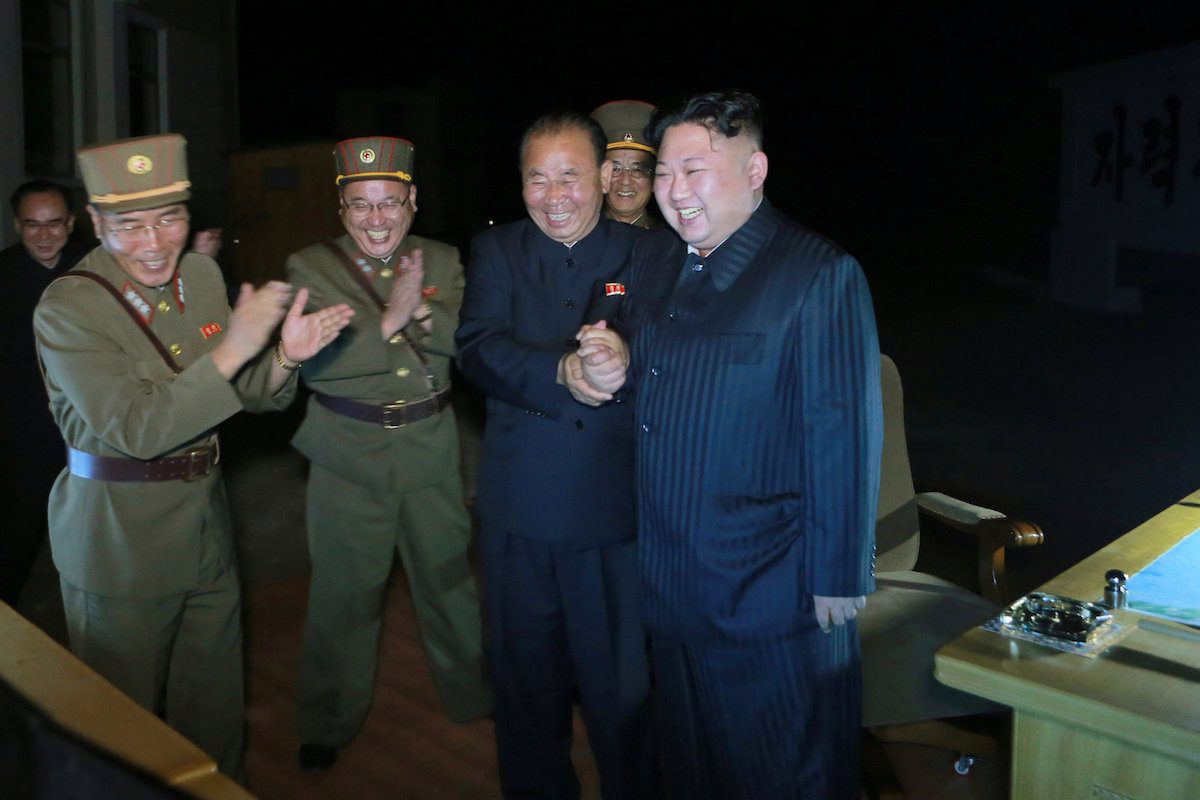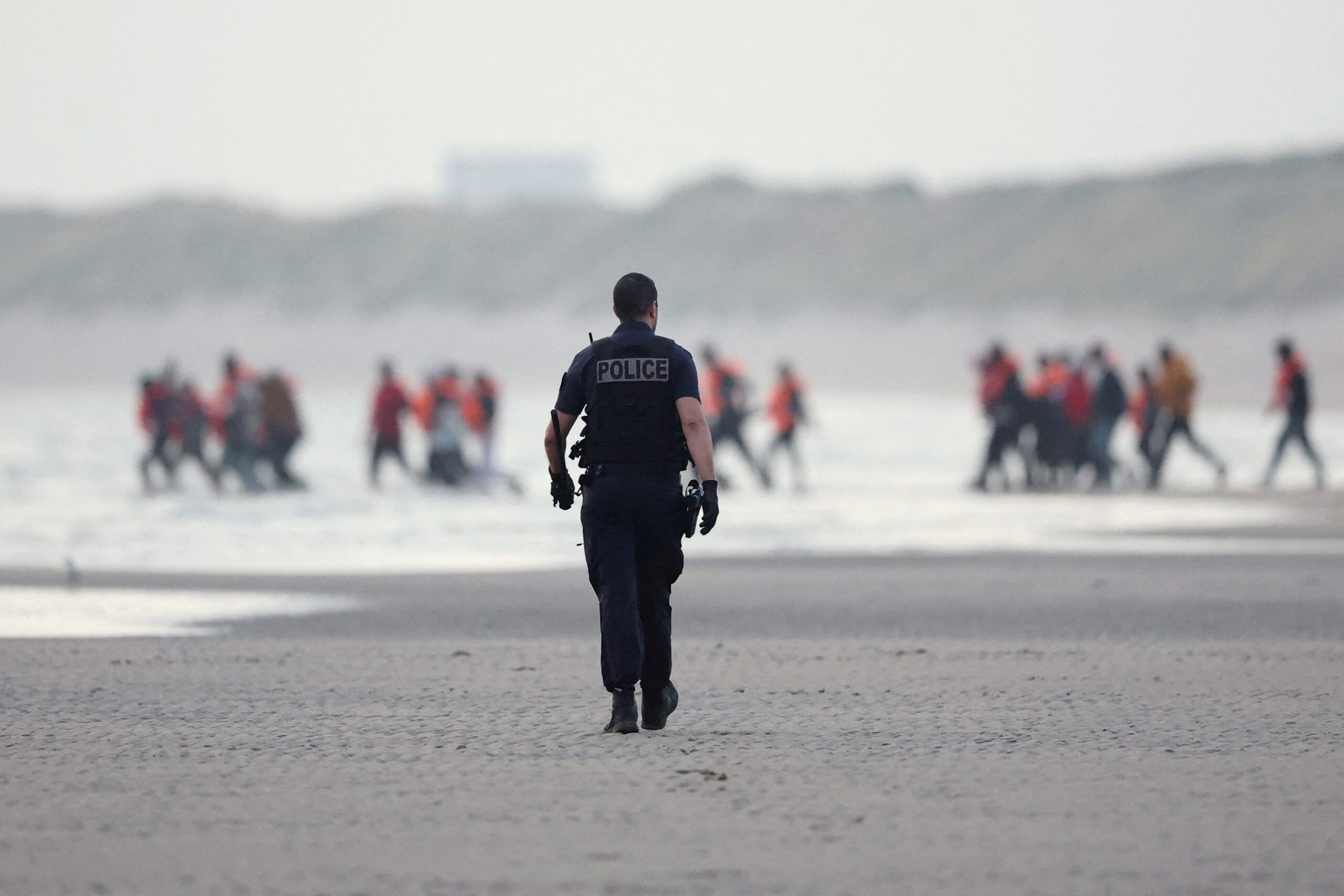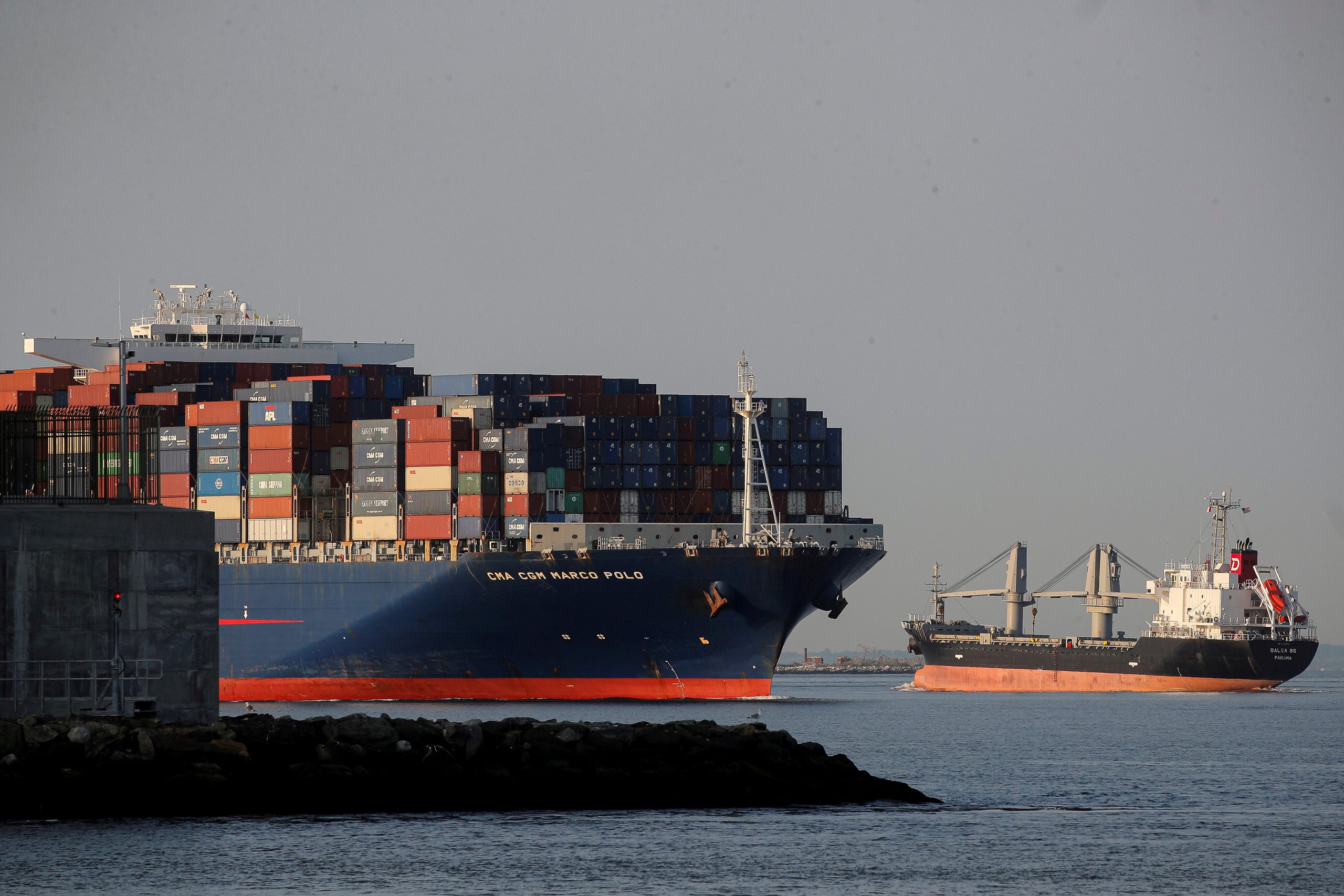North Korean leader Kim Jong Un guides the second test-fire of intercontinental ballistic missile (ICBM) Hwasong-14 in this undated picture provided by KCNA in Pyongyang on July 29, 2017. KCNA via Reuters
By James Stavridis (Bloomberg View) — As the world worries about the increasing threat from North Korea and its dangerous leader Kim Jong Un, there is a temptation to believe that the problems will be solved ashore. Newly installed president Moon Jae In of South Korea is exploring a return to the so-called “sunshine” policy of dealing openly with the North while using trade and engagement incentives to defuse the situation. The U.S. wants to deploy a new ground-based missile-defense system to protect troops at the demilitarized zone as well as Japan and Guam. China is increasing its control over the notoriously leaky border, moving military units closer to North Korea and preparing for a potential refugee crisis if conflict erupts.
All these are prudent moves, but it is well worth remembering that Korea is a long peninsula, with all approaches dominated by the sea. So it was perhaps not surprising that China and Russia are pushing vigorously to stop the robust program of at-sea exercises the U.S. undertakes with allies in the region as a precondition for talks with North Korea. While canceling some practice drills off the Korean coast may seem like no big deal, doing so would be one of the worst mistakes the U.S. could make, in terms of both security and diplomacy.
It is important to understand just how vital it is to train and exercise at sea, in the demanding maritime environment itself, if we are to be prepared to operate effectively in a crisis. Sailors and their ships effectively rust in port, and the complexity of preparing for large-scale activities on the oceans demands weeks of training individually for each ship, followed by weeks of working together.
The recent collision of U.S. destroyer Fitzgerald with a container ship off the coast of Japan — a single ship, operating alone – reminds us how inherently difficult it is to operate on the high seas. Our Navy ships typically train for over a year in U.S. waters before deploying forward. Working with other navies — given language, cultural and operational differences — adds another layer of difficulty. Facing North Korea at sea is a team sport, and we have to practice like any team if we are going to be effective.
In terms of actual operations, there are five key maritime tasks ahead of the U.S. military. First, as the Donald Trump administration seeks to control escalation and find a way for diplomacy to succeed, we need to gather intelligence effectively and conduct surveillance, especially of the North Korean nuclear and intercontinental ballistic missile programs.
That work can best be done from international waters by the U.S. Navy’s stealthy submarines and Arleigh Burke-class destroyers equipped with Aegis combat systems. These multi-mission destroyers have superb intelligence-gathering capability, and also boast the world’s most effective air-surveillance radar, the SPY-1, which can track even the smallest and fastest targets hundreds of miles away. The Navy has many of these ships at port in Yokosuka, Japan, as well as in all aircraft carrier strike groups that operate in the region.
Second, sea power is also vital for enforcing of sanctions against North Korea, including those passed unanimously last week by the United Nations Security Council. Over 90 percent of non-Chinese trade for North Korea moves across the oceans, and our ability to stop it matters deeply. This means not just cutting off incoming technical materials, foodstuffs and consumer goods, but also stopping goods leaving the country. The Kim regime is able to obtain hard cash by selling weapons and technology to countries and organizations including Iran, Hezbollah and Syria, as well as raw materials and seafood.
Another crucial element of deterrence is ballistic-missile defense. The ability to use sea-based platforms — the Aegis-equipped destroyers and the comparable Ticonderoga-class cruisers — in the waters off the southern portion of the peninsula is central to neutralizing North Korea’s long-range missiles. Coupled with the land-based system known as Thaad in an integrated air-defense network, these maritime systems can significantly reduce the power and lethality of the North Korean threat.
And while the U.S. can do much alone, it also needs to cooperate with allies, particularly our principal Asian partners, Japan and Australia. Japan, of course, faces a very specific series of threats — from Kim’s bellicose rhetoric to his propensity to launch test missiles in that direction. The Japanese, who operate the Aegis combat system on their Kongo-class destroyers, have the most capable navy in Asia after the U.S. and China. New Zealand, Malaysia, the Philippines, Singapore and other partners are also part of the coalition approach to stopping North Korea.
Finally, if we do end up applying “hard power” in either a massive or a precise set of preemptive strikes — a very bad option, but certainly a possibility — many will come from the sea. A strike force consisting of up to three carrier groups would bring together hundreds of tactical strike aircraft, as well as hundreds of Tomahawk cruise missiles. Supplemented by long-range Air Force assets, this armada would be crucial in striking the North Korean leadership and nuclear program. Given the ships’ ability to move nearly a thousand miles daily, it could operate on both sides of the Korea peninsula — out of range of effective North Korean counters-measures — and continue to pummel the regime.
One final consideration may seem counterintuitive, but is worth considering — doing some level of exercises with China itself. These would best focus on “benign” operations such as training in disaster relief, medical diplomacy, humanitarian projects, narcotics interdiction and the like. While not operationally significant, such exercises would help build confidence in terms of being able to communicate rapidly with the Chinese navy in times of crisis.
Given all the maritime capability that is needed in dealing with North Korea, it is clear that the U.S. must exercise on the high seas and practice all the scenarios outlined above. We need to do this in concert with our allies, honing our interoperability in ways that demonstrate to North Korea the overwhelming level of firepower they are facing. These exercises cannot be a bargaining chip in multilateral negotiations.
While Kim likes to maintain an air of bravado, he is not irrational — he knows open combat means the end of his nation and his family. Making clear to him the military threat he faces from the sea will help us prepare for the worst and, more important, perhaps help coax him to a negotiated conclusion to a situation that has the entire world on edge.
This column does not necessarily reflect the opinion of the editorial board or Bloomberg LP and its owners.
© 2017 Bloomberg L.P

 Join The Club
Join The Club











